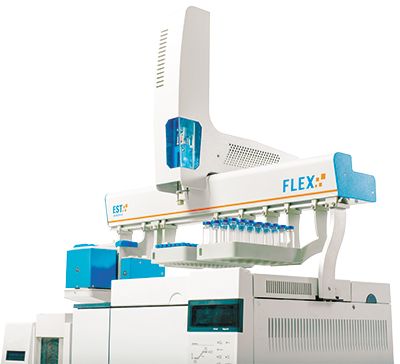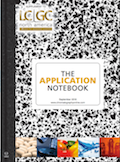Determination of Geosmin and 2-Methylisoborneol in Water Using SPME
The Application Notebook
Geosmin and 2-MIB have such a low odor threshold, that even the slightest amount can produce an unpleasant odor and taste in drinking water. Standard Method 6040D describes a procedure for the detection of 2-MIB and geosmin using solid phase microextraction (SPME) coupled with a gas chromatograph (GC) and mass spectrometer (MS). This examination will optimize the sampling and detection of 2-MIB and geosmin.
It has been found that the presence of blue green algae in water sources produces 2-MIB and geosmin. Both geosmin and 2-MIB are malodorous compounds that emit a musty earthy aroma. When the algae generates an abundance of these compounds in a drinking water reservoir, there are resulting taste and odor problems. Algae blooms are influenced by their climate, as a result, the formation of geosmin and 2-MIB is more of a problem during the summer months and in warmer climates. Areas in the southwestern portion of the United States seem to have the most problems with 2-MIB and geosmin.
Drinking waters are tested in order to determine water quality for prospective consumers. Two of the major complaints that water suppliers need to address are issues with taste and odor. Geosmin and 2-MIB, although nontoxic, both have very strong odors and can be detected at levels below 10 ppt. Thus, developing a reliable sampling and analysis platform is important.

Figure 1: Chromatogram of 50 ppt standard.
Experimental
The most efficient SPME fiber for this analysis was a divinylbenzene–carboxen–polydimethylsiloxane (DVB–CAR–PDMS) coated fiber with a 50–30 µm film thickness. The Shimadzu QP2010 SE GCMS was run in SIM mode and was fitted with a SPME liner and a Restek Rxi-5 Sil MS column. A Flex Robotic Sampling System was utilized for sampling automation.

A six point standard curve was prepared in water with a range of 5–100 ppt. Then 10 mL of each curve standard was added to a prepared 20 mL headspace vial and sealed. The prepared headspace vials contained 2.5 g of sodium chloride. A linear curve was attained for each analyte. After the curve was established, seven replicate samples of the 5 ppt and the 50 ppt standards were run in order to establish method detection limits and precision and accuracy data.
Results
The curve linearity from 5–100 ppt had an R2 of 0.999 or greater and a %RSD of better than 12.5. The resulting precision at 5 ppt was about 16% for 2-MIB and 7% for geosmin while the recoveries were 84% for 2-MIB and 95% for geosmin. At 50 ppt both compounds displayed improved precision and accuracy. Geosmin had 5.4% precision and 102% recovery while 2-MIB had 10.4% precision and 95% recovery.
Conclusion
The SPME analysis of 2-MIB and geosmin more than met the method requirements of Standard Method 6040D. Once the optimum parameters were established the Flex proved to be an exceptional system for the SPME sampling of drinking water samples.

EST Analytical
503 Commercial Drive, Cincinatti, OH 45014
tel. (513) 642-0100
Website: www.estanalytical.com

Separation of Ultra-Short and Long Chain PFAS Compounds Using a Positive Charge Surface Column
December 11th 2024A separation of ultra-short and long chain PFAS (C1-C18) is performed on a HALO®PCS Phenyl-Hexyl column along with a HALO®PFAS Delay column which demonstrates excellent retention for both hydrophilic and hydrophobic analytes.

.png&w=3840&q=75)

.png&w=3840&q=75)



.png&w=3840&q=75)



.png&w=3840&q=75)










